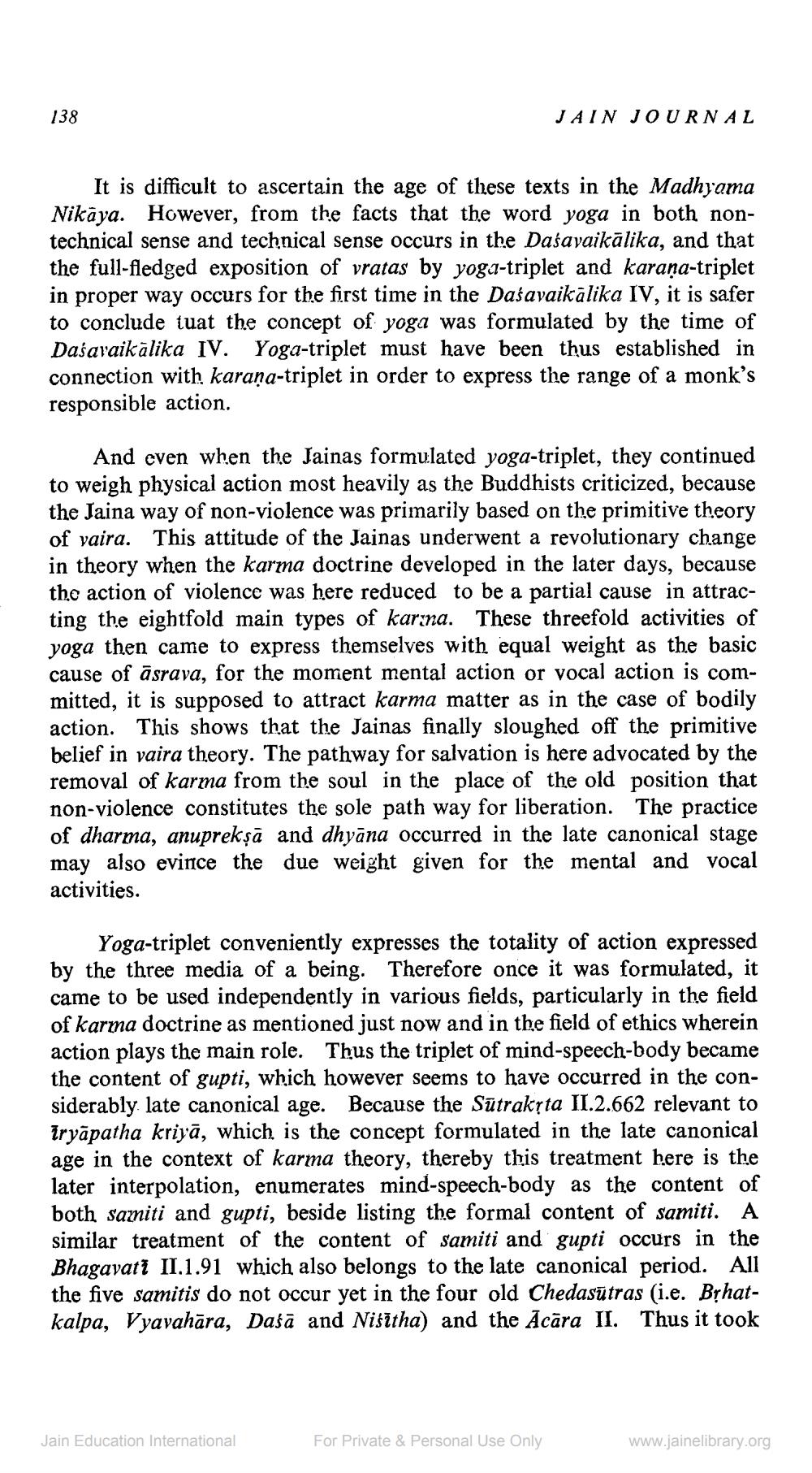________________
138
It is difficult to ascertain the age of these texts in the Madhyama Nikaya. However, from the facts that the word yoga in both nontechnical sense and technical sense occurs in the Daśavaikālika, and that the full-fledged exposition of vratas by yoga-triplet and karaṇa-triplet in proper way occurs for the first time in the Daśavaikālika IV, it is safer to conclude tuat the concept of yoga was formulated by the time of Daśavaikālika IV. Yoga-triplet must have been thus established in connection with karaṇa-triplet in order to express the range of a monk's responsible action.
JAIN JOURNAL
And even when the Jainas formulated yoga-triplet, they continued to weigh physical action most heavily as the Buddhists criticized, because the Jaina way of non-violence was primarily based on the primitive theory of vaira. This attitude of the Jainas underwent a revolutionary change in theory when the karma doctrine developed in the later days, because the action of violence was here reduced to be a partial cause in attracting the eightfold main types of karma. These threefold activities of yoga then came to express themselves with equal weight as the basic cause of asrava, for the moment mental action or vocal action is committed, it is supposed to attract karma matter as in the case of bodily action. This shows that the Jainas finally sloughed off the primitive belief in vaira theory. The pathway for salvation is here advocated by the removal of karma from the soul in the place of the old position that non-violence constitutes the sole path way for liberation. The practice of dharma, anuprekṣā and dhyāna occurred in the late canonical stage may also evince the due weight given for the mental and vocal activities.
Yoga-triplet conveniently expresses the totality of action expressed by the three media of a being. Therefore once it was formulated, it came to be used independently in various fields, particularly in the field of karma doctrine as mentioned just now and in the field of ethics wherein action plays the main role. Thus the triplet of mind-speech-body became the content of gupti, which however seems to have occurred in the considerably late canonical age. Because the Sutrakṛta II.2.662 relevant to iryapatha kriya, which is the concept formulated in the late canonical age in the context of karma theory, thereby this treatment here is the later interpolation, enumerates mind-speech-body as the content of both samiti and gupti, beside listing the formal content of samiti. A similar treatment of the content of samiti and gupti occurs in the Bhagavati II.1.91 which also belongs to the late canonical period. All the five samitis do not occur yet in the four old Chedasūtras (i.e. Bṛhatkalpa, Vyavahāra, Daśā and Nisitha) and the Acara II. Thus it took
Jain Education International
For Private & Personal Use Only
www.jainelibrary.org




